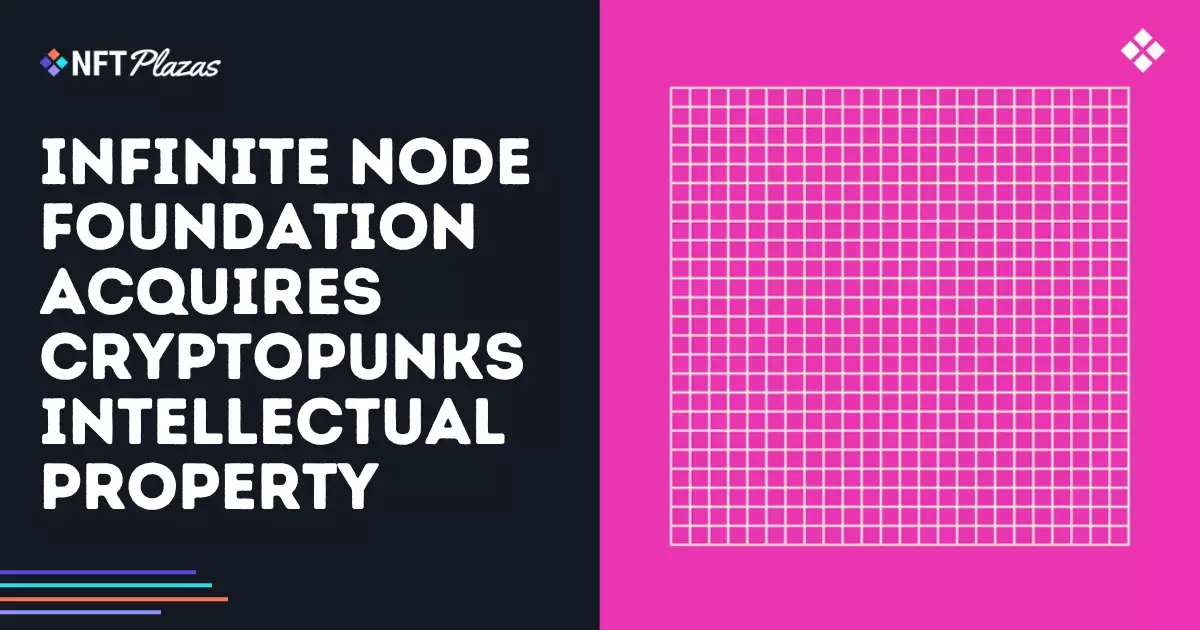In a groundbreaking shift within the NFT ecosystem, the Infinite Node Foundation (NODE) has recently acquired the intellectual property of the iconic CryptoPunks collection. This monumental change in governance moves the project from private hands under Yuga Labs to a nonprofit organization, sparking both excitement and skepticism in the evolving landscape of digital art. Founded by Micky Malka and Becky Kleiner, NODE aims to focus on preservation and accessibility in a domain often sullied by commercialization and exploitation.
The billion-dollar question remains: can a nonprofit truly navigate the complexities of digital art without succumbing to the same pressures that led to the commercialization of such projects? Moving the CryptoPunks from a profit-driven model to a mission-oriented nonprofit certainly has its charms, but it opens the door to new challenges and expectations. One cannot help but wonder if this new structure can breed the necessary innovation while maintaining its core ethos, or if it will retrace the pitfalls of past ownerships.
The Need for Preservation over Profit
NODE’s acquisition of the 10,000-piece CryptoPunks collection comes with a staggering commitment of $25 million dedicated to long-term stewardship. This significant financial backing indicates that there are serious intentions behind the nonprofit’s goals. The foundation plans to establish a permanent exhibition space in Palo Alto, California, which will serve not just as an archive but as a hub for technological infrastructure, including running a full Ethereum node. This ambition demonstrates a commitment to preservation that goes beyond simple display; it focuses on creating an ecosystem that supports ongoing interaction and study of digital art.
However, while the promise of preservation is alluring, one must question whether NODE can walk the fine line between accessibility and exclusivity. Will the nonprofit truly position CryptoPunks as a community asset, or will it inadvertently create new forms of elitism disguised as public access? The history of art, digital or otherwise, shows us that barriers can take on many forms, and as much as NODE advocates for community engagement, its actions will ultimately dictate the inclusivity of its mission.
Expert Guidance: A Double-Edged Sword
NODE’s governance includes advisory roles filled by notable figures linked to CryptoPunks and the broader digital art sector, including Larva Labs’ founders, Matt Hall and John Watkinson, alongside Yuga Labs’ co-founder Wylie Aronow. While these individuals bring an invaluable wealth of knowledge, the close ties to commercial ventures raise eyebrows. Can the fresh perspective of a nonprofit be genuinely realized, or will insiders still seek dividends from their past commercial successes?
What’s more, Natalie Stone’s involvement as a consultant adds another layer of complexity. Her long-standing contribution to the CryptoPunks community offers insights and continuity, yet the potential for conflict between community interests and governance intentions must not be overlooked. Do the stakeholders in NODE reflect the diversity of the crypto community, or is it merely a reinterpretation of the same old paradigm where a few voices overemphasize their influence?
A New Era of Engagement or Just a Mirage?
NODE has vowed to maintain the original vision of CryptoPunks, rejecting new commercial initiatives in favor of community engagement and education. While this focus is undoubtedly noble, one has to be cautious about the romanticism surrounding this promise. Digital art has proven volatile, and with the constant evolution of blockchain technologies and NFT trends, can a foundation rooted in preservation truly adapt without sacrificing innovation?
The statement by Micky Malka, “CryptoPunks sparked a cultural movement…we intend to future-proof this landmark work,” evokes optimism. However, one must remain vigilant against sentimentality veiling pragmatism. The world of digital art demands not only conservation but also evolution. How NODE reconciles these often-conflicting objectives could dictate its success or failure.
As CryptoPunks takes center stage once again under this new management, art enthusiasts and crypto advocates alike will be watching closely. Can NODE strike a balance that champions access and preservation while fostering a community that embraces both the historical significance and future possibilities of digital art? Only time will tell, but the stakes have never been higher for the movement that has already altered the artistic landscape.















